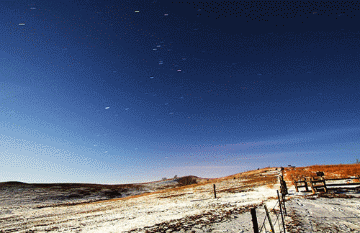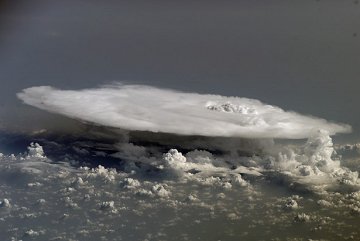| Where's Saturn? Is that a UFO--or the ISS? What's the name of that star? Get the answers from mySKY--a fun new astronomy helper from Meade. | |  | WEEKEND RINGS: This weekend, Saturn makes its closest approach to Earth (770 million miles) for all of 2008. Look straight up at midnight for the golden planet hanging next to the bright star Regulus. The view through a backyard telescope may take your breath away.  STARS POP OUT: Watching last Wednesday's lunar eclipse, Mike Hollingshead was amazed how "the sky went dark when the Moon entered Earth's shadow." Photographing the event from the bitter cold ("0o F!") of Little Sioux, Iowa, he documented the startling change: STARS POP OUT: Watching last Wednesday's lunar eclipse, Mike Hollingshead was amazed how "the sky went dark when the Moon entered Earth's shadow." Photographing the event from the bitter cold ("0o F!") of Little Sioux, Iowa, he documented the startling change:

"The first frame looks like day, but it's just strong moonlight. As the eclipse progresses the stars pop out and the ground darkens," he says. "I just love this aspect of lunar eclipses." "It has always fascinated me how dark it gets and how the shadows change during a lunar eclipse," agrees John E Cordiale who made a similar movie from his backyard observatory in Queensbury, New York. "I used a Nikon D200 to take 30 second exposures. This worked until mid-eclipse when the batteries in the camera stopped working at the 4o F outside temperature." UPDATED: Lunar Eclipse Gallery
[Interactive World Map of Eclipse Photos] ABOVE THE STORM: The afternoon sky darkened. Grey clouds billowed to the heavens. Thunder shook the ground and lightning danced overhead. The first droplets of heavy rain were just hitting the ground when the spaceship flew by.... This really happened on Feb. 5th when the International Space Station (ISS) flew over western Africa during an afternoon thunderstorm in Mali: 
Orbiting Earth 200 miles high at a speed of 17,000 mph, astronauts took the picture using a Nikon D2Xs peering through one of the space station's many windows. It shows an enormous anvil cloud. Anvil clouds form in the tops of thunderstorms 5 to 10 miles high and consist mainly of ice. They get their anvil shape from the fact that the rising air in thunderstorms expands and spreads out as the air bumps up against the bottom of the stratosphere. There's no new science or meteorology in this photo--just a shot of rare beauty. More ISS Earth-shots: Sunrise near Tehran; Suburban Dallas at Night; New Zealand Peak; Sands of Sudan; Austrian Alps
| 
